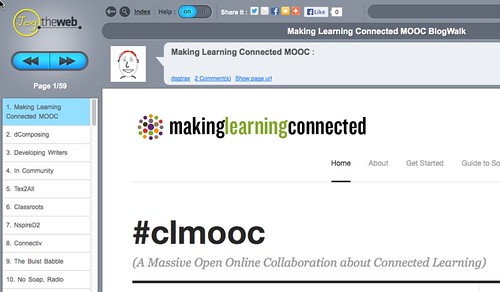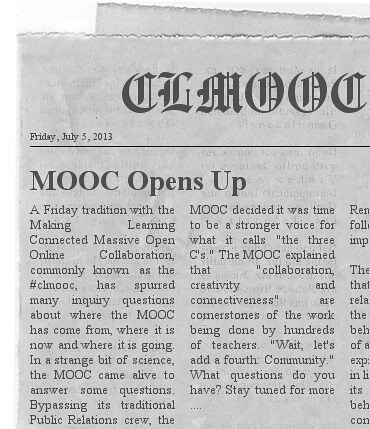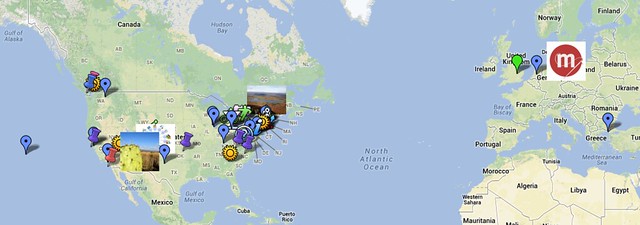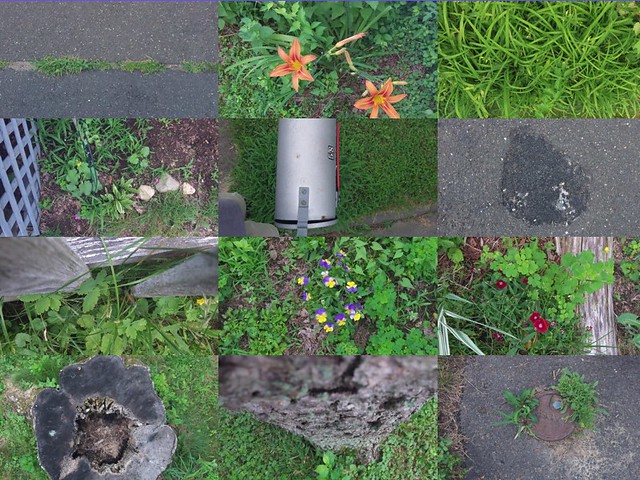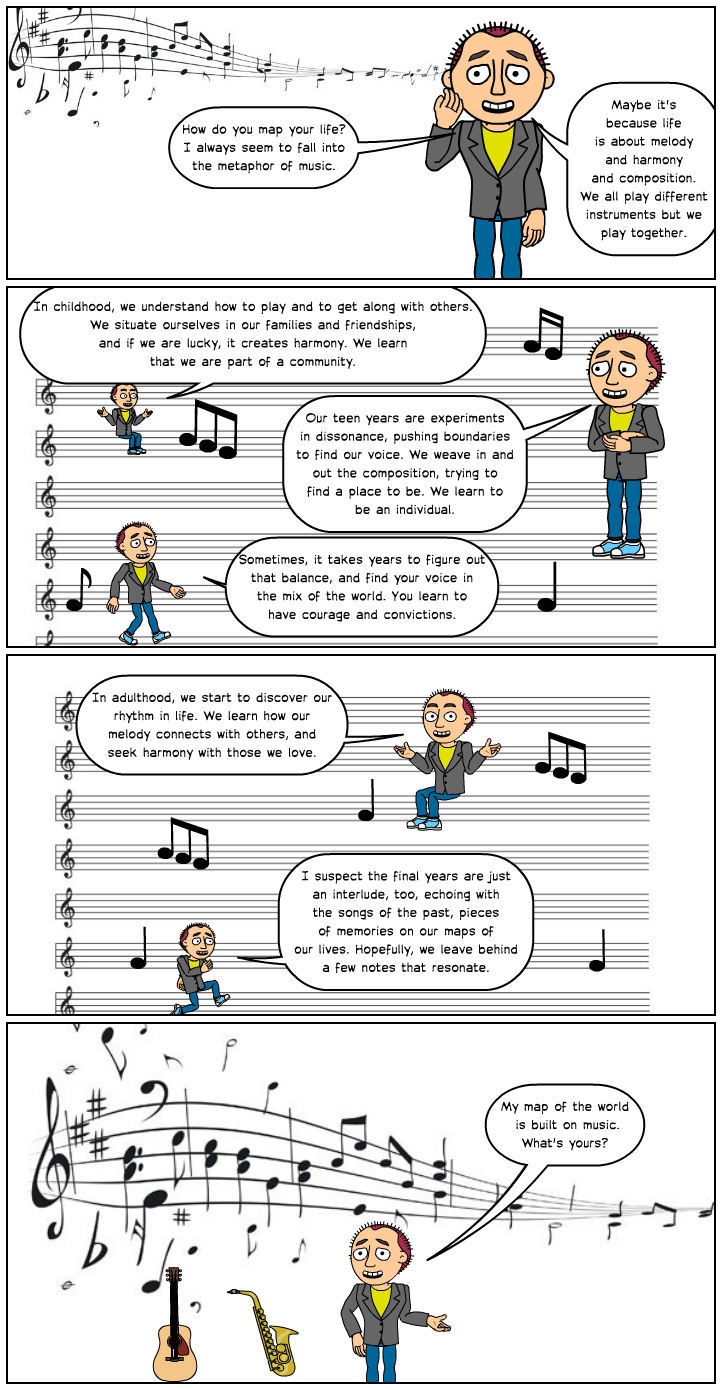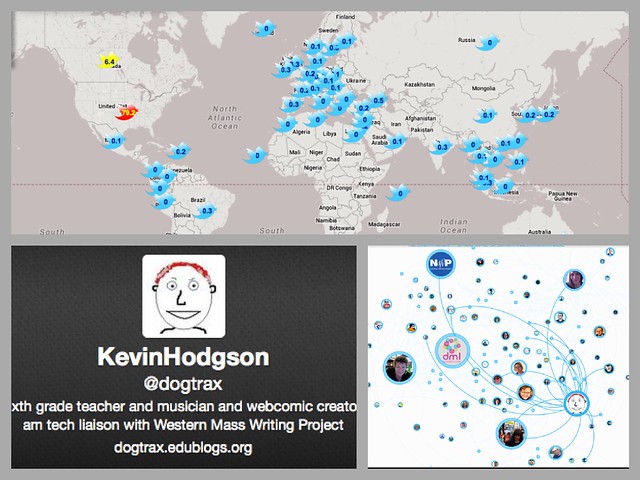
We’ve had maps on our minds at the Making Learning Connected MOOC this week. You’d be surprised (or not, if you are in the MOOC) by the range of mapping that went on — from typical geographical maps, to metaphorical maps, to maps that were flowcharts mapping out an idea. And lots more in-between.
Maps are interesting things, aren’t they? They help us shape our world. We make maps to put ideas and people and places into some semblance of order and connections. Maps are heuristics, a way to make sense of things that at first seem beyond making sense. Maps are also place markers. They document where we’ve been, and where we are going, and how we are going to get there.
In terms of the principles of Connected Learning, what makes maps so important is that they can show connections forged between ideas and between people. In the collage above, which I created early on in the week and then never posted, notice the bottom right image map. This comes from a service that will map out connections from Twitter (Mentionmap), and I’m struck by how important those people have become to my professional growth as a teacher. I turn to folks in my network a lot for help, for advice, for sounding board ears. You can’t quite see all of the smaller connections, but there are tons of folks that I orbit around on a regular basis. That’s something I know without having this map, but the map helps me see those connections from a new angle, and it documents where I am right now. (And the site allows you to click deeper into connections, moving through the nodes of people and hashtags — that’s something the static image does not show.)
The top map (via Tweetsmap) in the collage shows followers from around the world. That map is not nearly as useful and as interesting to me as the other one because I don’t “see” connections in the top one. I just see data points, and data points without context are not all that useful. In the bottom map, in the live version, you can follow the linking lines, and watch as other connections unfold, and the web that comes into play makes you realize that we are immersed in the connected educator movement. The map makes that more visible than ever.
The other day, I was thinking about maps in connection to literature because my youngest son and I were immersed in “reading” a map that is part of a book we are reading aloud (The Familiars). He was running his finger along the river crossing the world, and asking about the names of these imaginary places, and I realized how important this map was to him, the listener of this story, as we situate ourselves as readers to a magical place beyond our view. This map was a document we come back to regularly as we read, following the heroes on their journey. The same thing happens with maps in other books we read. When we start a read-aloud, we often turn to the first and last page, searching for a map to orientate us to the story.
The question of whether making maps is “writing” and interpreting maps is “reading” — and thus, part of literacy came up in a few discussions this week — and I would argue, yes. What about you?
Peace (along the terrain),
Kevin



